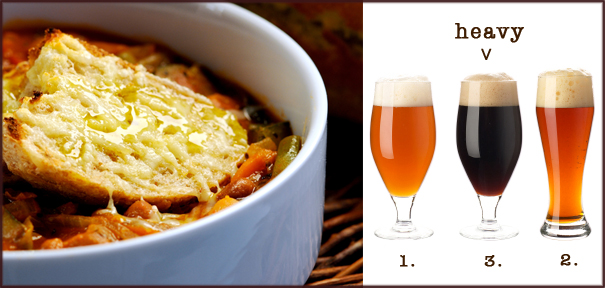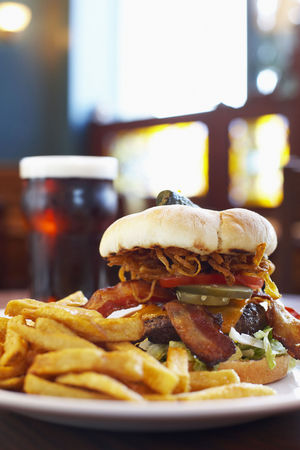There are three general rules of thumb when matching food with beer or wine:

1. Choose a beer or wine that either complements or contrasts with the dish. Think: Do I want a flavor that goes with this dish or one that cuts through this dish? And select accordingly.
2. Choose a beer or wine based on the weight of the dish…is it heavy, medium or light? Then choose a beer or wine that complements that weight …not by color but by body.
3. The kind of beer or wine you like can help you choose a new beer or wine. If you like lighter wines, you will like lighter beers and vice versa.

1. Light styles
Beers: lager, pilsener, dark lager, golden ale
Wines: Pinot Grigio, White Zinfandel, Riesling
Great with salads, chicken sandwiches, spicy pizzas and calzones, nachos, light pastas
2. Medium styles
Beers: amber ale or lager, red ale, pale ale, doppelbock, bock, steam, ESB, IPA, dunkel, some wheats/weizens, most ales
Wines: Merlot, Shiraz, Pinot Noirs, light Chardonnays
Great with burgers, meat pizzas, pepperoni, mushrooms, shrimp, fish & chips
3. Heavier styles
Beers: hefes, porters, stouts, barleywines
Wines: Cabernet, Chardonnay, varietal blends
Perfect with lasagna, Bolognese and marinara, steak, beef, sausage pizzas and calzones

Keep in mind that when pairing a beer or a wine with food, it is the same basic characteristics of both that should guide your choice…light, medium or heavy!
Here are some more specific beer pairing recommendations:
Amber Lager
Chili, burgers, BBQ
Pale Ale
Burgers, meat pies, cheeses
Amber or Red Ale
Chicken, seafood, burgers, spicy foods
Pilsener
Chicken, salads, brats, salmon
Porter
Smoked or roasted foods, BBQ, sausages
Dry Stout
Steaks, oysters, any hearty/rich foods
Märzen
Mexican foods, chicken, pork, spicy foods
Portions of this information are provided by Old Chicago Pasta and Pizza, used with permission.

